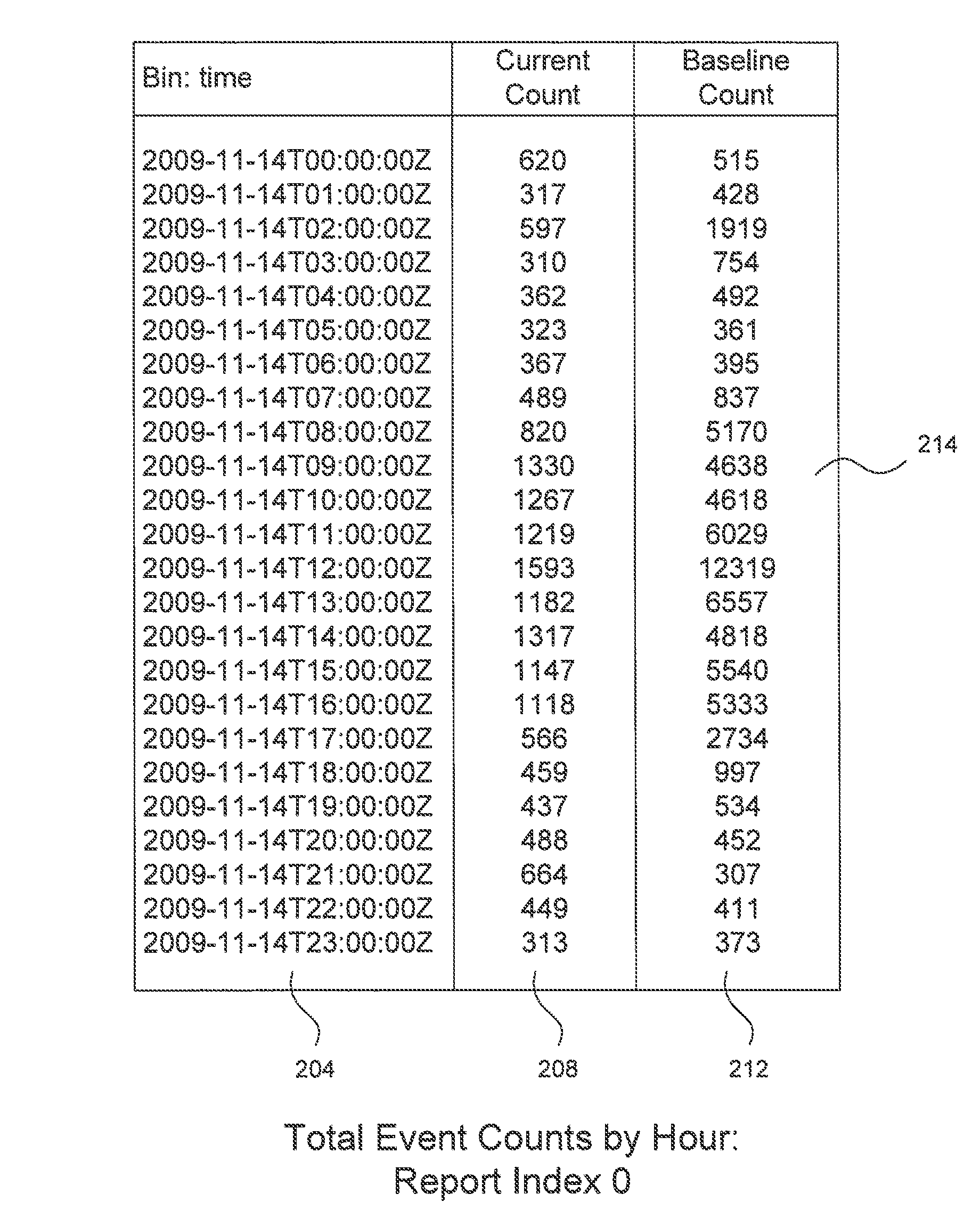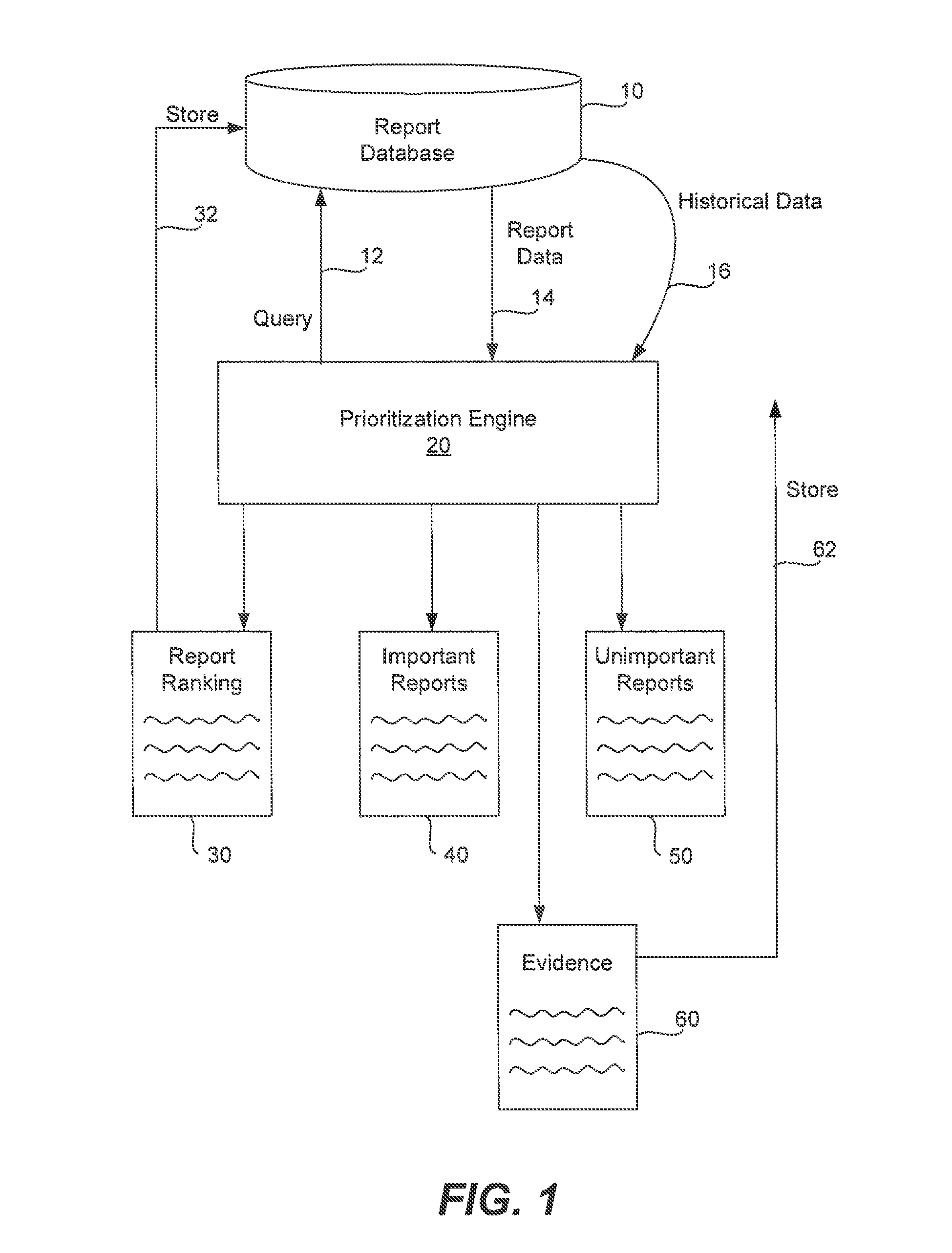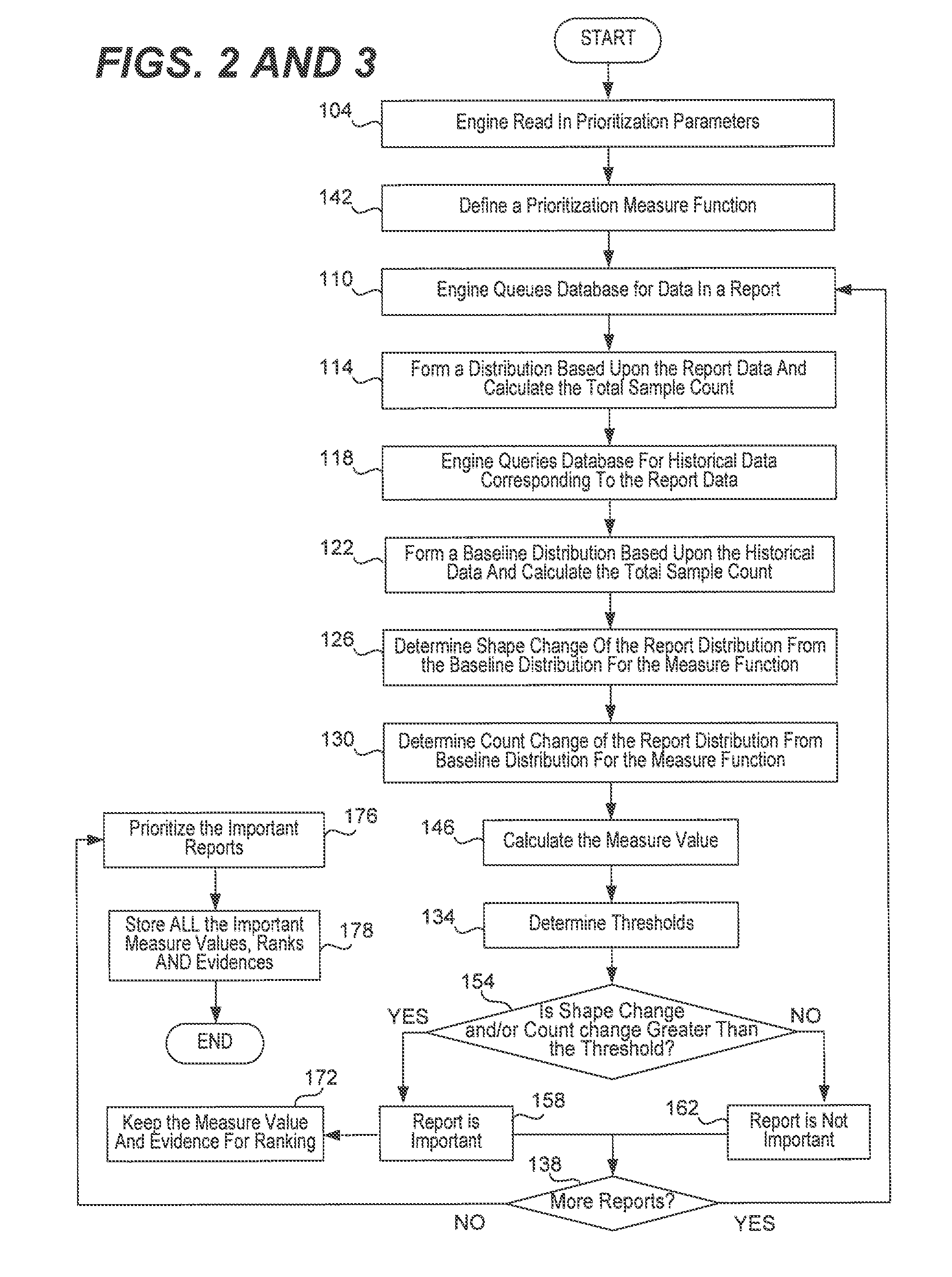Prioritization of reports using content data change from baseline
- Summary
- Abstract
- Description
- Claims
- Application Information
AI Technical Summary
Benefits of technology
Problems solved by technology
Method used
Image
Examples
Embodiment Construction
[0021]The present invention uses input report data in the form of distributions or histograms to make conclusions about the importance of a current report. For example, a report may list the number of malware events in a computer network that occur each hour. If this report were to be presented in graphical form, the x-axis of the report is time (the 24 hours in the day) while the y-axis is the number of malware events that occur during one of those hours, thus producing a current report histogram. Historical report data for the number of malware events may be used to form a baseline histogram, but instead of listing malware events for the current day, the y-axis data could be from the mean value of each corresponding weekly-hour within a moving time period such as an eight-week duration, etc. Here, “current” means when the events in the report content were logged; the “historical” is relative to the “current.” Each histogram has a particular shape to its curve and a particular area...
PUM
 Login to View More
Login to View More Abstract
Description
Claims
Application Information
 Login to View More
Login to View More - R&D
- Intellectual Property
- Life Sciences
- Materials
- Tech Scout
- Unparalleled Data Quality
- Higher Quality Content
- 60% Fewer Hallucinations
Browse by: Latest US Patents, China's latest patents, Technical Efficacy Thesaurus, Application Domain, Technology Topic, Popular Technical Reports.
© 2025 PatSnap. All rights reserved.Legal|Privacy policy|Modern Slavery Act Transparency Statement|Sitemap|About US| Contact US: help@patsnap.com



